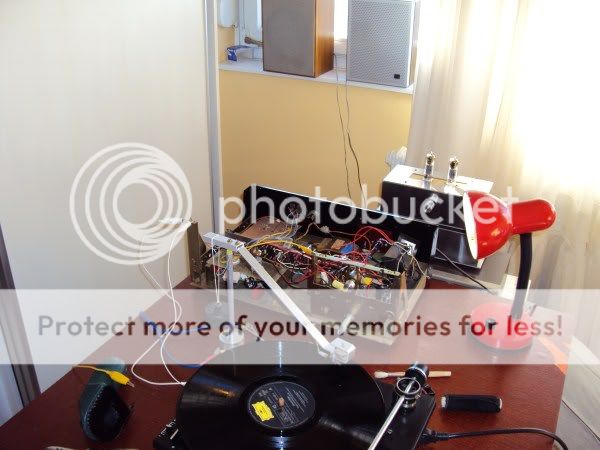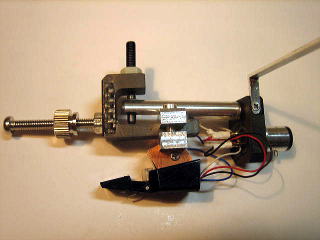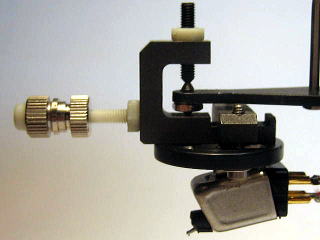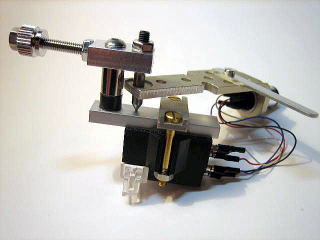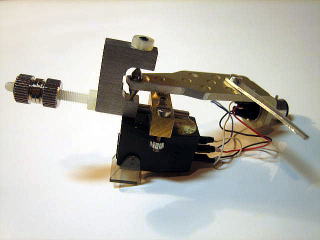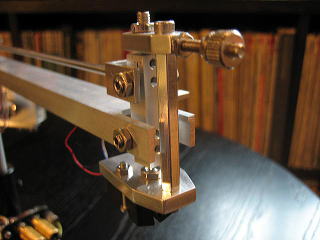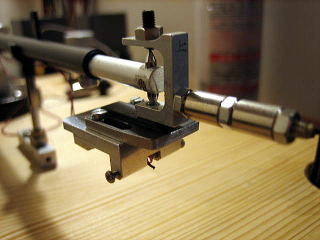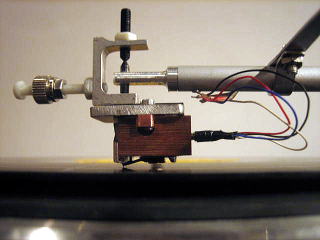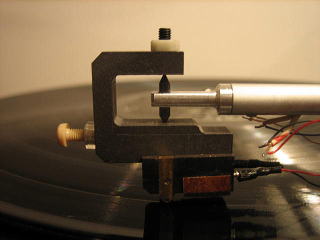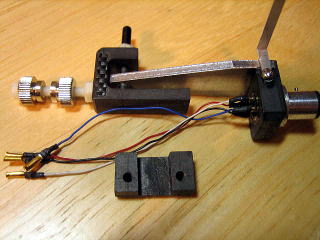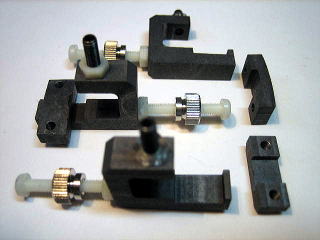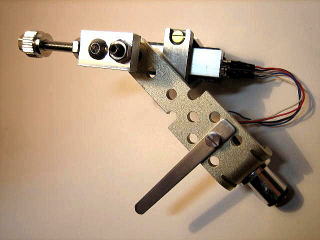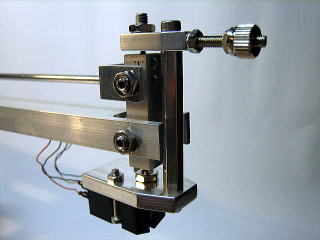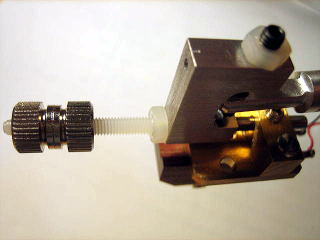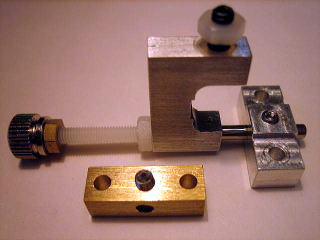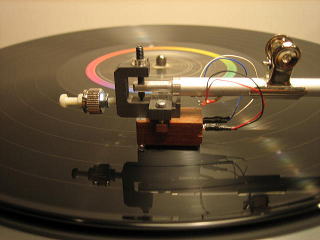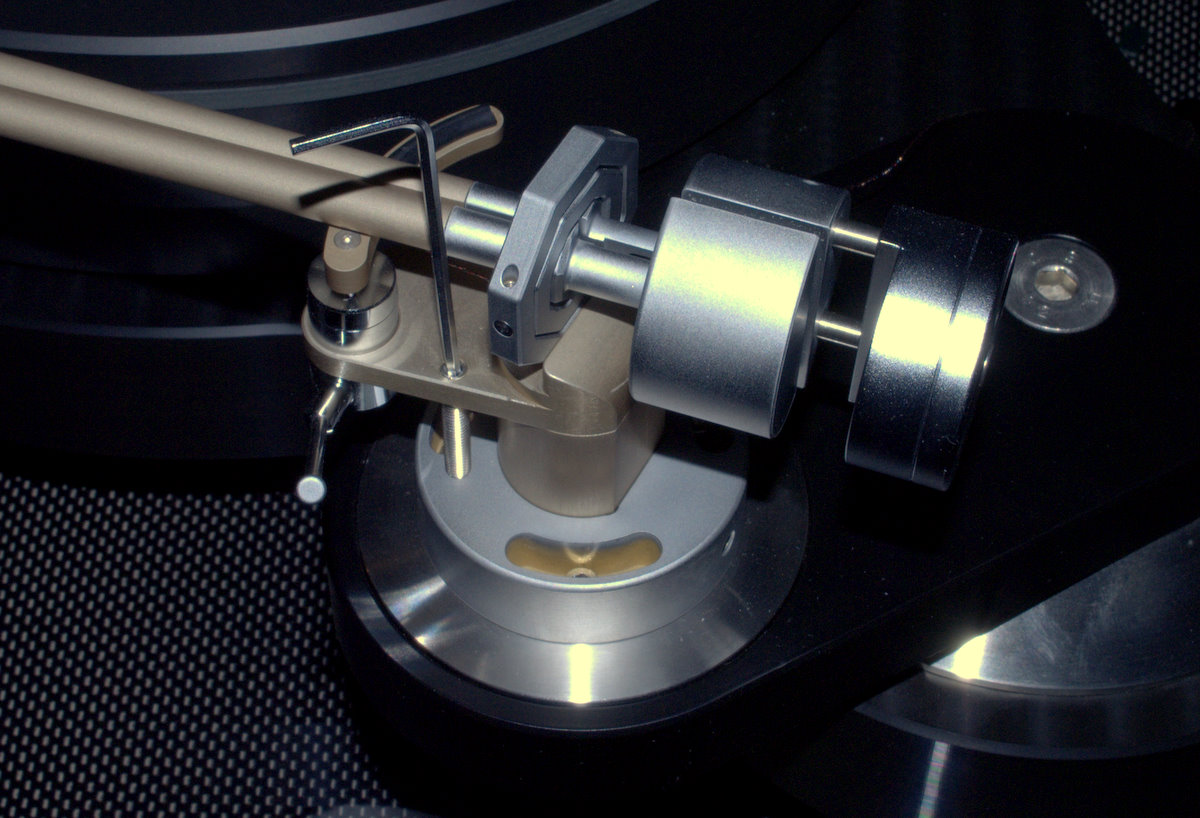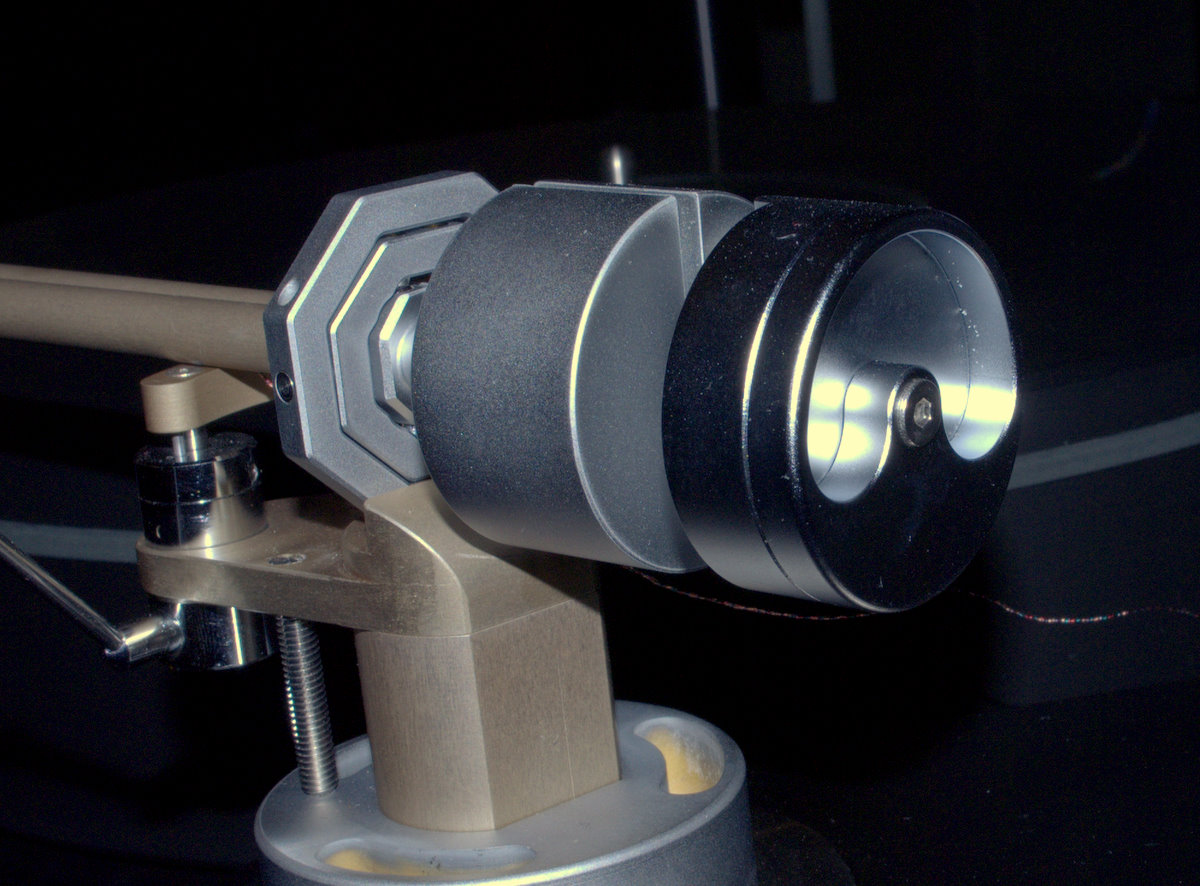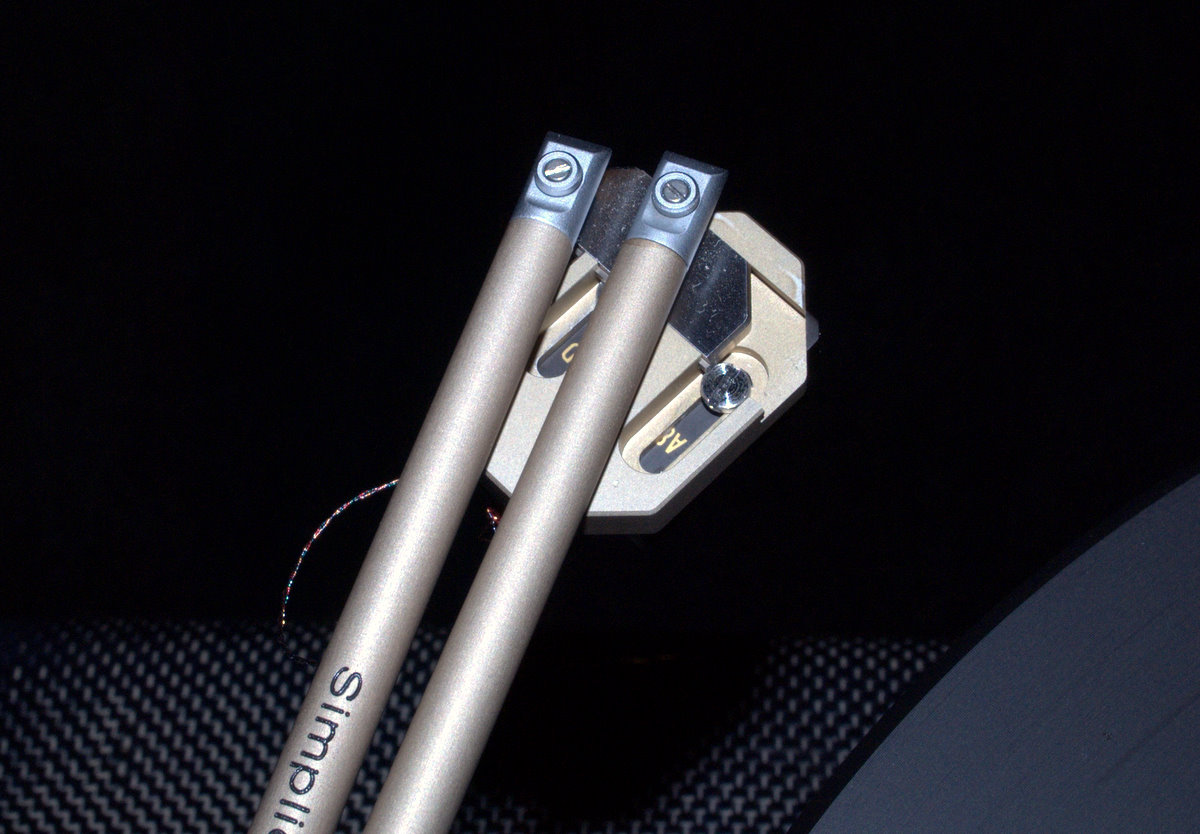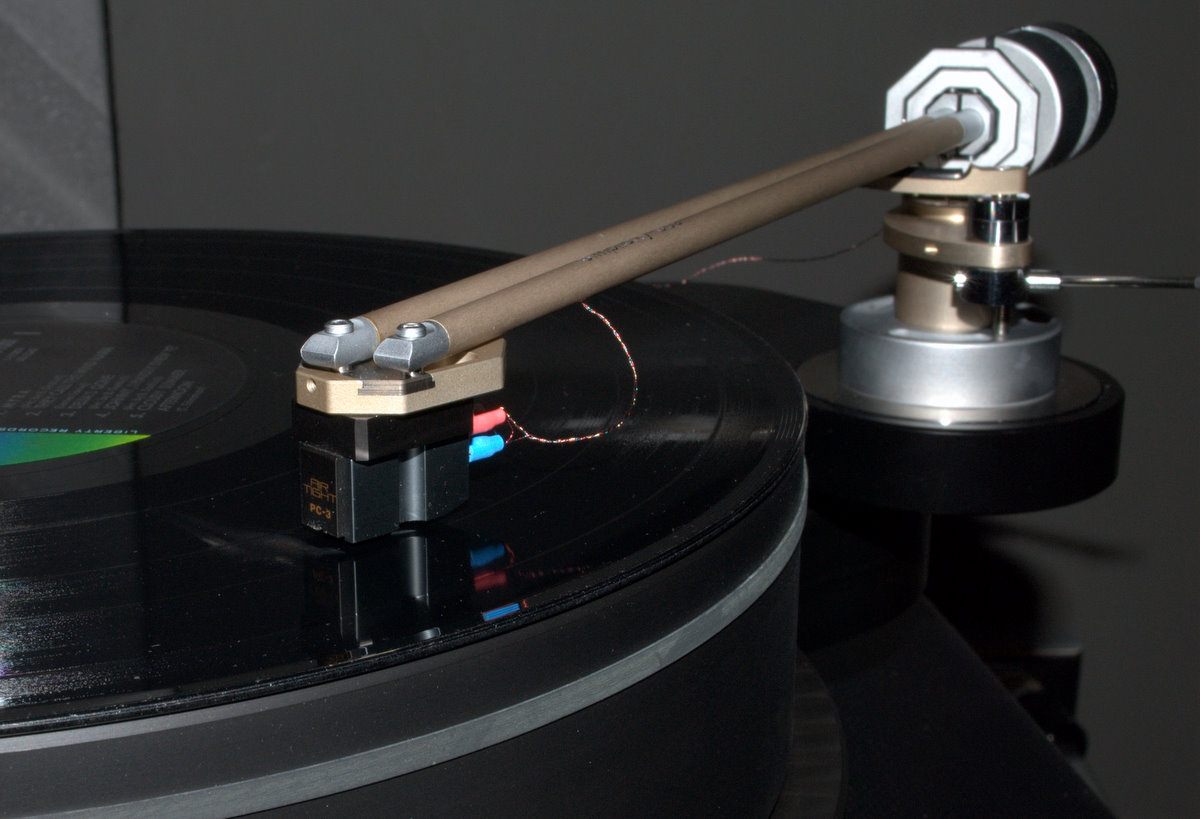More experimental tonearms. I am going off on a tangent here, pun intended.These have nothing to do tangential tracking. I believe it's about using string to deal with tracking force to lessen the moment of inertia from the ubiquitous counterweight. As you can tell, some of these arms use recycle parts from other arms.
It was inspired by the(47 Labs) RS Labs RS-A1 tonearm. Here's the text on the website via Google Translate:
I'm not sure any of these work at all as tonearms. Apparently this is just one big experiment and we never saw the final product as can be seen in this series pictures in historical context: What disappointment!
More images from Russian site
An externally hosted image should be here but it was not working when we last tested it.An externally hosted image should be here but it was not working when we last tested it.
An externally hosted image should be here but it was not working when we last tested it.An externally hosted image should be here but it was not working when we last tested it.
An externally hosted image should be here but it was not working when we last tested it.An externally hosted image should be here but it was not working when we last tested it.
An externally hosted image should be here but it was not working when we last tested it.An externally hosted image should be here but it was not working when we last tested it.
.
Can this last one work ?
I am also puzzled by the swinguing headshells you posted earlier. Can they improve tracking and reduce distortion ?
Regards
Ricardo
These are puzzling me... Does the idea work ?
RCruz: "These are puzzling me... Does the idea work?"
That's a loaded question. Please go back to earlier posts to explore more. The RS Labs examples are not intended to correct offset angles or to reduce tracking error so it's really not about tangency. But it is intended to reduce skating force.
Check here: www.sakurasystems.com/products/rsa-1.html
The tonearms that are intended be tangent can be examined in posts about the Thales tonearm and its theories. If you have time, go through the entire thread.
.
RCruz: "I was puzzled about the head shell contraptions but you made it very clear now."
I think I included the link with the simplified answer. Here's a more elaborate piece: www.sakurasystems.com/articles/rs-a1.html
.
Thales Simplicity tonearm pix
More nice pictures of Thales Simplicity tonearm. I think I like this arm even more than the flagship model.
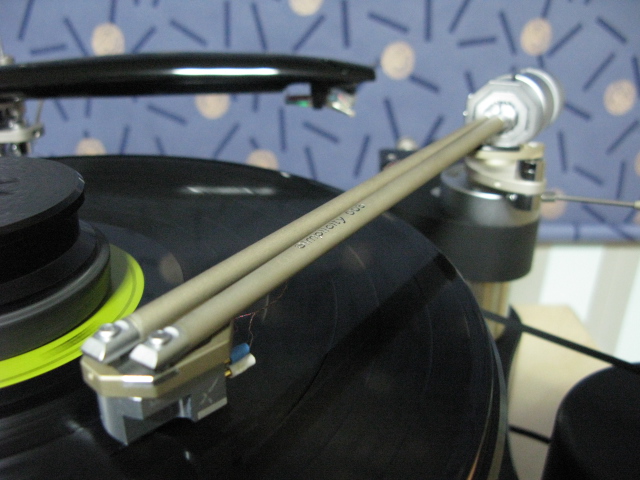
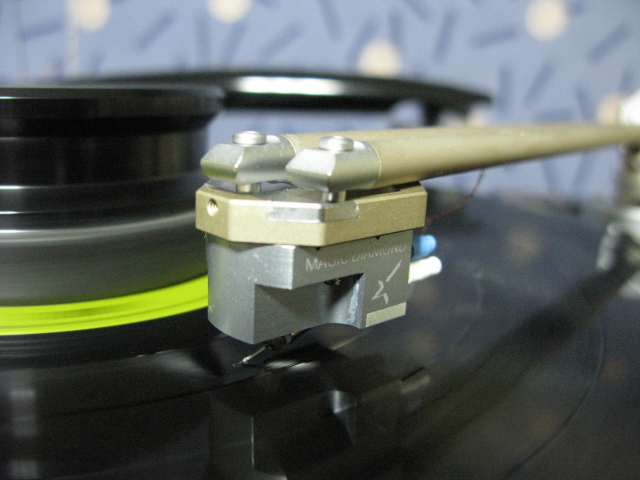
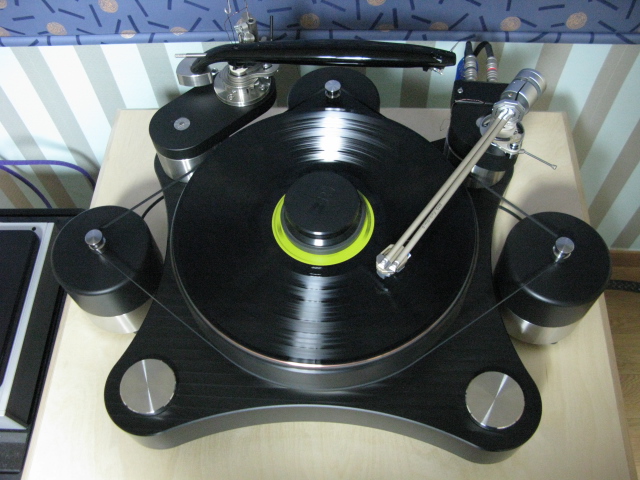
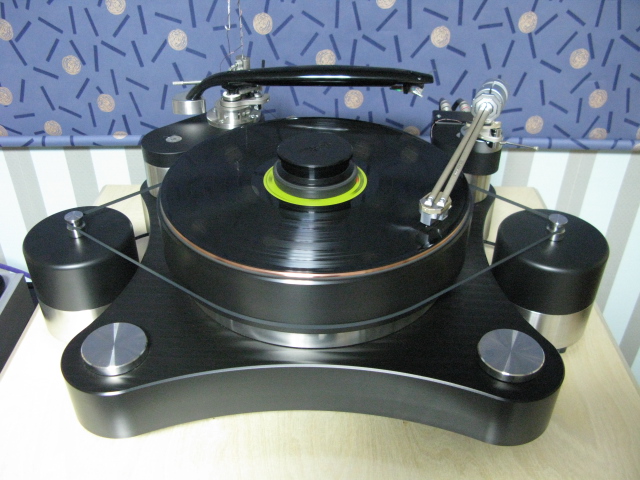
__________________________________________
.
More nice pictures of Thales Simplicity tonearm. I think I like this arm even more than the flagship model.
__________________________________________
An externally hosted image should be here but it was not working when we last tested it.
An externally hosted image should be here but it was not working when we last tested it.
An externally hosted image should be here but it was not working when we last tested it.
An externally hosted image should be here but it was not working when we last tested it.
.
Last edited:
comparing arms
Check out the similarities and differences.
Thales Simplicity vs Garrard Zero

.
Thales Simplicity vs DIY Mystery Arm

.
Thales Simplicity tetragonal pivot points.

.
One way to modify the String arm by eliminating one string and replace the other string with a low mass rod like the Garrard Zero as the guiding arm but using short strings as bearings for pivot movement.

.
Check out the similarities and differences.
Thales Simplicity vs Garrard Zero

.
Thales Simplicity vs DIY Mystery Arm

.
Thales Simplicity tetragonal pivot points.

.
One way to modify the String arm by eliminating one string and replace the other string with a low mass rod like the Garrard Zero as the guiding arm but using short strings as bearings for pivot movement.

.
Last edited:
Micha Huber of Thales interview
Fascinating stuff!
An Interview with Micha Huber of Thales
To me, the thought provoking part is when he says this: "we can say there can be audible distortions if you have more than 1° tracking error at the inner groove. But the audible difference between 0° and 0.1° is much more than between 0.1 and 1°, because the lost of needle control is audible as soon as you leave the tangential position."
Hmm.....
.
Fascinating stuff!
An Interview with Micha Huber of Thales
An Interview with Micha Huber of Thales
Terence Wong: Mr Huber, what is your background and how did Thales tonearm come about? Explain the strengths and weakness of the Burne Jones and Garrad Zero 100 design and how do the Thales original and Simplicity similarities and differences begins and end?
MH: My background is the Swiss machine- and watch-industry. After my training in mechanical engineering I have worked together with Andreas Strehler in developing watch-movement for five years. My job was building the prototypes, and regarding this I have built several famous movements part by part: Moser & Cie Cal 321/341/342, Harry Winston “Opus 7”, Maurice Lacroix “Le Chronographe”. Two years ago, I left the watch industry and concentrated in building tonearms only.
I have studied a lot of solutions regarding tonearms. Since I was 17 years old, I tried to combine the perfect geometry of the tangential tracking with advantages of the pivoted tonearm. The most popular samples in history are the BJ and the Garrard Zero, perhaps there are more if you do some research. However, I was not satisfied with the compromising tetragon-solutions. They allow a little tracking error, and my first goal was to create an absolutely tangential tracking pivoted arm. That’s how the Thales was born. The main innovation is that I use a triangle-based geometry instead of a tetragon. For the shortly launched Simplicity, I stepped back to the tetragon-solution, but I found a new version, which comes up with three times less tracking error than all solutions published so far.
If we do an overview:
Burne Jones: Tetragon solution, non parallel arms, needle-tip between pivot points, +/-0.030°
Garrard: Tetragon solution, parallel arms, needle tip under bearing point, +/-0.024°
Thales: New triangle solution, working along the Thales’ circle, absolutely tangential
Simplicity: Tetragon solution, non-parallel arms, needle tip under bearing point, +/- 0.008°
You see, the difference regarding geometry is significant, but not huge. But the bearing quality of the Thales and Simplicity is much more developed, that’s why the theoretical advantages have been brought to an audible better result for the first time.
Terence Wong: Describe the intricacies of the arm design and assembly for its high retail price. In other words, what goes into a Thales tonearm to justify its asking price?
MH: Only manufacturing without compromising makes it possible to realize a more complicate solution to top the established sound quality. The Thales tonearm consist of more than 100 parts. Every part is designed according to its specific function. We use finest sapphire and ball bearings to reduce the friction to the lowest values possible. The arm-material is cut out of solid blocks, we do not use stressed material like sheet or tube. All steel parts are stainless and polished to the best quality available worldwide. The assembling is done by my employee, Daniel Schmid, who is a well-trained watchmaker. Beside the traditional craftsmanship we work with most modern equipment to reach the best quality in engineering and manufacturing.
Terence Wong: Tracking error can be reduced with longer arms eg 10-inch or 12-inch, a less complicated design option? Or put it another way, how is the Thales design superior to longer arms?
MH: You cannot compare the reduction in tracking error of traditional 12-inch arms with our products. To reach the precision of the Simplicity for example a traditional arm needed to be 1,500 inches long, while the Thales original defines the reference, which cannot be topped theoretically.
Terence Wong: While it may be true a shorter arm would introduce less resonance, wouldn’t the dual arm tube design of the Simplicity or the additional horizontal arm tube of the Thales Original tonearm increases the amount of resonance introduced into the arm structure?
MH: You are absolutely right; this task needs a specific solution. But by finding this, you can turn the handicap to a benefit and top the damping properties of traditional single-tube design. I am afraid I cannot publish all details regarding this, but basically the dodge is to tune both arms in harmonically and make them damping each other instead of amplifying their resonance-frequency.
Terence Wong: I noticed the counterweight is also split for the two parts of the tonearm, please explain the workings of the counterweight, if there is anything to it that is different from conventional tonearms? If I am not mistaken, the counterweight arrangement also takes care of the anti-skate requirements?
MH: This now definitely touches on one of the secret of WHY the Simplicity does work that smoothly… But basically, the divided counterweight has little magnets embedded which makes it possible to a) balance the side forces (anti-skating), b) reduce the friction and c) damp the tonearm-tubes.
Terence Wong: At what point is the amount of tracking distortion considered unacceptable? Is there a correlation of the size of the record grooves vs the distortion level?
MH: This is quite interesting and starts to touch the limit of today’s knowledge. In Munich 2010 I have discussed this with some friends of the industry (Helmut Brinkmann, Frank Schröder) and we have come to the same conclusion independently:
Basically the tracking error affects the music-signal and adds a distortion to it. There is a correlation between the tracking diameter and the signal frequency. The narrower the tracking-diameter and the higher the frequency is, the better you can hear audible distortion. Besides that, the tracking-error has another influence to the tracking-properties: As soon as it leaves the tangential position, the diamond is touched by the left and right side of the groove a little out of phase. This occurs in less needle control.
Taking in consideration both aspects, we can say there can be audible distortions if you have more than 1° tracking error at the inner groove. But the audible difference between 0° and 0.1° is much more than between 0.1 and 1°, because the lost of needle control is audible as soon as you leave the tangential position.
Terence Wong: On the Simplicity tonearm – how effective is the arm design/bearing compared to the Thales Original? How does the bearing design compared to traditional pivoted bearings?
MH: After playing with three prototypes now, we have improved the double cardanic bearing of the Simplicity and reach about the same friction values as for the Thales original. All my design is based on very little clearance, as my philosophy is not to allow any movement except horizontal and vertical. Our tangential pivoted construction can compare with any ball bearing design regarding friction, but not with unipivot tonearms as they have only one contact point. But in my point of view, we do not only need as less friction as possible, but rigidity and the correct balance to compensate the in-side forces caused by the friction between record and diamond.
Terence Wong: Is the Simplicity and Thales original as easy to setup and use as a conventional tonearm?
MH: The Simplicity is even easier to setup, as the headshell can be taken apart and the cartridge is to be adjusted in a special tool delivered with the tonearm. The Thales original needs a little more love, because of the fine mechanics, which needs more space as well.
Terence Wong: Thank You Micha!
Article contributed by Terence Wong from MOD AV magazine.
To me, the thought provoking part is when he says this: "we can say there can be audible distortions if you have more than 1° tracking error at the inner groove. But the audible difference between 0° and 0.1° is much more than between 0.1 and 1°, because the lost of needle control is audible as soon as you leave the tangential position."
Hmm.....
.
Van Eps Labs
More pictures of the fascinating Van Eps Labs tonearm.
While searching info on the arm, I found the blurt from an eBay seller about the bio of the inventor:
.
More pictures of the fascinating Van Eps Labs tonearm.
While searching info on the arm, I found the blurt from an eBay seller about the bio of the inventor:
"The tonearm is one-of-a-kind and was fabricated by hand by Robert Van Eps. It's a prototype tonearm designed to keep the stylus parallel with the record groove for optimum performance. It's a prototype designed to keep the stylus tonearm parallel with the record groove for optimum performance. Robert later patented this design, then sold it to Thorens, which they used in their manufactured turntables. Robert later patented this design, then sold it to Thorens, Which they used in their manufactured turntables. Robert was a watchmaker by trade and the brother of Jazz guitarist legend George Van Eps. Robert was a watchmaker by trade and the brother of jazz legend guitarist George Van Eps. Ragtime music legend Fred Van Eps was Robert's father, and he played piano with his father on their 5 String Banjo record label. Ragtime music legend Fred Van Eps what Robert's father, and he played piano with his father on their 5-String Banjo record label."
An externally hosted image should be here but it was not working when we last tested it.
An externally hosted image should be here but it was not working when we last tested it.
.
Last edited:
more pictures
Pictures from Asian website: audioexotics.hk
Thales tonearm with Grand Prix Monaco turntable.
- - - - - - - - - - - - - - - - - - - - - - - - - - - - - - - -
Thales tonearm with TW Acustic Raven turntable.
.
Pictures from Asian website: audioexotics.hk
Thales tonearm with Grand Prix Monaco turntable.
An externally hosted image should be here but it was not working when we last tested it.
An externally hosted image should be here but it was not working when we last tested it.
An externally hosted image should be here but it was not working when we last tested it.
An externally hosted image should be here but it was not working when we last tested it.
- - - - - - - - - - - - - - - - - - - - - - - - - - - - - - - -
Thales tonearm with TW Acustic Raven turntable.
An externally hosted image should be here but it was not working when we last tested it.
An externally hosted image should be here but it was not working when we last tested it.
An externally hosted image should be here but it was not working when we last tested it.
An externally hosted image should be here but it was not working when we last tested it.
An externally hosted image should be here but it was not working when we last tested it.
An externally hosted image should be here but it was not working when we last tested it.
.
Thales Mark 2 version
User talks about the Mark 2 version of the Thales arm.
.
User talks about the Mark 2 version of the Thales arm.
An externally hosted image should be here but it was not working when we last tested it.
An externally hosted image should be here but it was not working when we last tested it.
.
Way back in this thread somebody called Straight Tracker described his arm. IMO, he's the only one who fully grasped the geometry problem. Basically, if you draw a line through the stylus (it's debatable if it should be parallel to the record or not) it has to pass through the arm pivot point (which could be virtual). If this isn't the case, the arm will need an anti-skate mechanism and the stylus will have undesired dynamic forces placed on it. I see very few arms that satisfy this criteria. Solving the tracking error problem is only one aspect of an arm design and IMO pivoting head shells are not the answer. Those arms still have offset, albeit variable, so still have a serious shortcoming. Air bearing arms solve the geometry problems but introduce huge lateral mass. Again, Straight Tracker identified the solution.
Conrad Hoffman: "If this isn't the case, the arm will need an anti-skate mechanism and the stylus will have undesired dynamic forces placed on it. I see very few arms that satisfy this criteria. Solving the tracking error problem is only one aspect of an arm design and IMO pivoting head shells are not the answer. Those arms still have offset, albeit variable, so still have a serious shortcoming. Air bearing arms solve the geometry problems but introduce huge lateral mass."
I agree with you about the offset and and skating force issue. But this thread is purely for entertainment and intellectual exercise, so don't take it too seriously. It's a hobby forum! Indulge me, if you will. Besides, I am a sucker for audio porn!
Straight Tracker's arm has a short straight armtube so the geometric variation needs to be done at the base of the arm and, in his case, the arm uses linear bearings (or gliding mechanism in semantics) not pivot bearings so they have to at least introduce less horizontal mass than air bearing or gliding rail a la Souther otherwise it would be pointless. Mr. Straight Tracker (Ralf) uses rather advanced flex bearings so it might solve the problem but that remains to be seen. I guess his design is a kind of a hybrid of pivoting and gliding mechanisms.
Pivoting headshell is for simplicity purpose and feasible for a DIY project whereas Ralf's project might be too expensive and too complicated to do. I have suggested a tricycle style carriage at the armbase to conform to the Thales geometry but, again, I have concern of bearing quality. Another approach I posted earlier is from inventor R.W. Birch, that uses a split-plane idea similar to the Dynavector tonearm Mark Kelly experimented with. Check out the drawings. It too eliminates a pivoting headshell and does the pivoting at the mid section of the armlength. I don't think it can be 100% tangent but it can be very close. The key is to create and arm that can change its effective length for couple inches. But those couple inches is an enormous task in engineering!
I will continue to find different solutions and examples for this thread. It's still fun, right? No?
An externally hosted image should be here but it was not working when we last tested it.
An externally hosted image should be here but it was not working when we last tested it.
.
Don't get me wrong- I love looking at this stuff and wouldn't be terribly unhappy if I owned some of it. Mostly out of my price range unless DIY. I've been working on my own version of a conventional pivoted arm design, but with the pivot sliding in a track to the rear. So far its just ideas and sketches, and the real issue is that I could easily build it for me, but it's too complicated in terms of servo for people that don't have a really spectacular junk box. Commercially it's probably out of the question. I'm tempted to build something up with just a crank, rather than a servo, to listen and see if the effort is worth it.
- Home
- Source & Line
- Analogue Source
- Angling for 90° - tangential pivot tonearms
